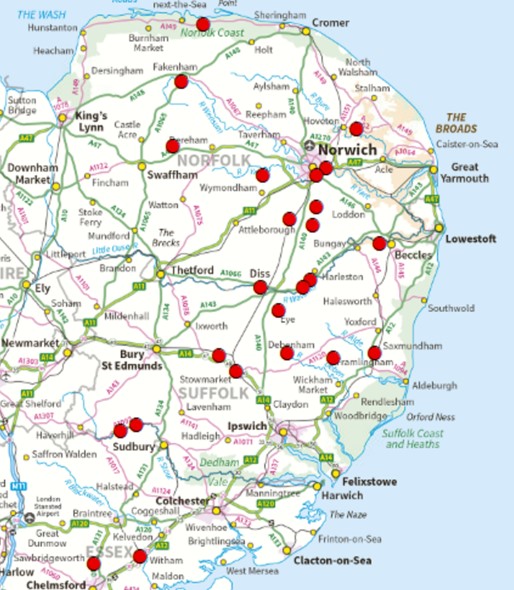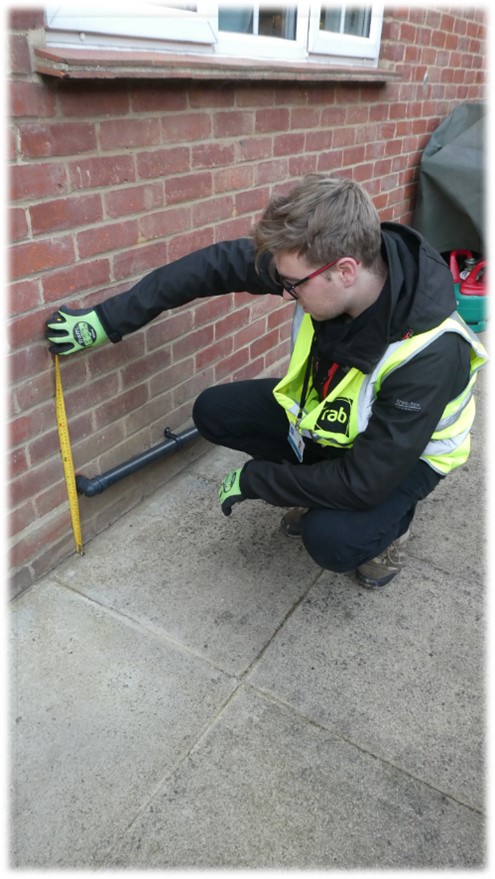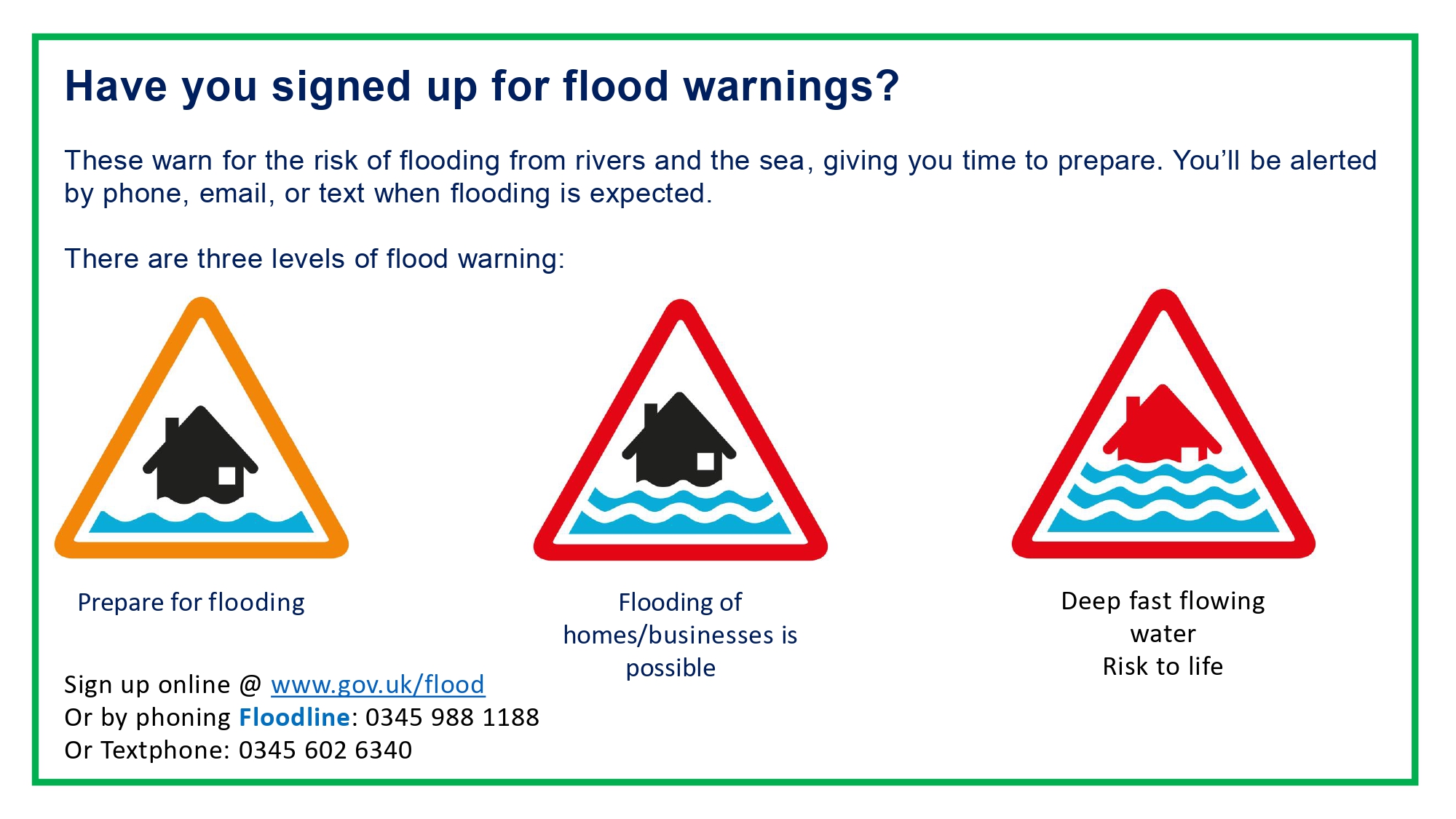East Anglia Property Flood Resilience Project
Overview
What is this project about?
An Environment Agency project to deliver Property Flood Resilience (PFR) measures to properties in East Anglia which are currently at risk of flooding from main rivers.
Why are we doing this?
There are a number of locations in East Anglia where there are houses at risk of frequent flooding or have flooded recently, and due to the isolated location of the properties there is no opportunity to develop a more permanent engineered solution within the budget available. We are therefore developing a project to deliver individual PFR measures to these properties. Below is a map of the approximate locations where PFR will be installed through the project.

What are the aims of the project?
To reduce flood risk to properties across East Anglia through the delivery of PFR measures.
What is property flood resilience (PFR)?
Property Flood Resilience, known as PFR includes a range of measures which can be installed on a property to reduce the damage caused by flood water entering the property. The products that can be fitted to a house include flood doors, water resisting airbricks, non-return valves in sewer and drainage pipes, as well as sealing service entry points, weep holes & internal pumps.
What have we done so far?
We have undertaken “Initial Assessments” in several communities to help inform our understanding of flood risk.
We have collected property threshold levels for over 500 homes in our area and we have compared these to modelled flood levels.
We have identified which properties are at the highest risk of frequent flooding from main river sources and therefore could potentially be eligible for inclusion in this project.
PFR Specialists RAB Consultants have carried out PFR surveys on over 60 homes at frequent risk of flooding from main river sources and homeowners have received their completed reports.
What is a PFR Survey?
As every house is different, each has been initially surveyed to assess the flood risk to the individual dwelling and also to assess the suitability of a range of available products to mitigate the risk of water entry.
The PFR Survey has determined the ways in which flood water could enter the property. They have also determined whether any suitable resistance or resilience measures could be effective in either preventing water from entering the property or reducing the impacts of flooding which may be experienced. The homeowners have received a report which describes and explains the flood risk and any recommended PFR measures which could be installed.

What are the next steps for the project?
We have used the completed PFR Survey reports to undertake the required economic assessments and complete the business case for the project, which should be approved soon.
Consequently, by Autumn we hope to be in a position where we can appoint contractors to carry out the installation of the PFR works.
So, all being well, our contractors will contact the property owners sometime in Autumn 2023 to arrange an appointment to discuss the installation of the PFR measures.
Our aspiration is to have the measures installed in all properties by the end of 2024.
Having completed the business case we are now more confident that we will be able to fully fund the project from government Flood Defence Grant in Aid funding and local levy funding raised by the Anglian Eastern Regional Flood & Coastal Committee (RFCC), so we anticipate that there will be no need for homeowner contributions for the installation of the recommended PFR measures to the properties.
You can read the latest briefings in the related docs section at the bottom of this webpage.
Helpful External Websites
Flood and water management - Norfolk County Council
Flood management in Suffolk | Suffolk County Council
Essex Flood and Water Management

If you have questions on the East Anglia PFR project, or to have a further discussion about how you could be involved, please contact:
Sarah Palmer
Flood & Coastal Risk Management Advisor
Telephone: 0203 0258487
Audiences
- Recreational and commercial river users
- Fishing clubs and representative associations
- Members of the public with an interest in the river, the species and conservation
- Businesses
- Charities
- Statutory organisations
- NGOs
- Members of the public
- Elected representatives, including MPs
- Local councils
- Academics
- All water abstractors
- Environment Agency customers
- Local authorities
- District and parish councils
- Environmental bodies
- Land owners
- Farming associations
- Drainage associations
- RFCCs
- Elected representatives, including MPs
- Water companies
- Members of the public
- Recreational and commercial river users
- Community groups
- Environment Agency colleagues
Interests
- Flood management

Share
Share on Twitter Share on Facebook